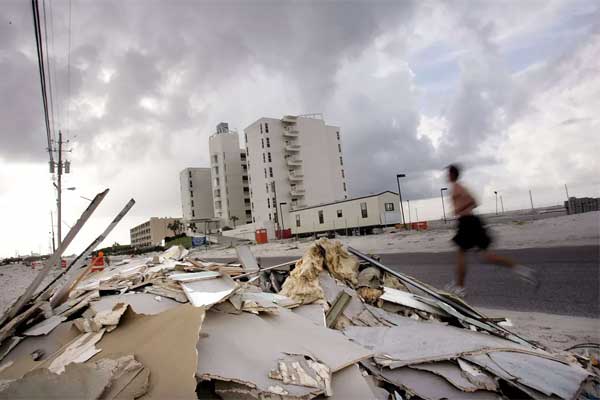Hurricane Irma, one of the most powerful hurricanes ever recorded, devastated the Caribbean before hitting the coast of Florida. Irma set a new record for hurricane-related power outages, with 10 million outages in Florida alone.
As Northeast Caribbean residents were sifting through the wreckage, Hurricane Maria caused catastrophic damage to many islands. Many Puerto Ricans are still without power and telecommunications services, crippling recovery efforts.
In Puerto Rico, many of the power plants remain intact, but the power grid has been scrambled. An astonishing 80 percent of the transmission lines are down, equating to billions of dollars in damage.
Irma and Maria are reminders of the fragility of the distributed power grid system and backup power generators. Despite widespread outages, some success stories involving solar energy have emerged.
Solar energy with battery storage is gaining popularity among federal, state, and local officials that are concerned about grid resiliency in the face of extreme weather events.
As the prices plummet for solar PV and energy storage capacity improves, solar energy with battery backup is becoming a viable option for emergency power during long-term grid outages. In some cases, municipalities are using battery banks to reduce the expense of peak power by using stored power from batteries to meet this demand while also offering backup power during grid outages for emergency services.
Sterling, Massachusetts is an excellent example of this with its solar + storage microgrid. With a 3 MW solar array and 2 MW of lithium-ion batteries, the Sterling Municipal Light Department estimates the battery storage saves ratepayers $400,000 annually, and the project has a payback period of 7.5 years before factoring in grants.
During a grid outage, batteries would supply emergency power to the police station and dispatch center, providing greater resiliency.
Elon Musk, CEO of Tesla Motors and Puerto Rican Governor Ricardo Rossello have been in a conversation via Twitter about using renewable energy to rebuild the countries electrical grid. This could be a golden opportunity for Puerto Rico to lead the way in the transitioning from fossil fuels to clean energy sources.
“The Tesla team has done this for many smaller islands around the world,” Musk tweeted, “it can be done for Puerto Rico too.” Although Tesla has done work with small islands, resorts, and breweries, Puerto Rico has a population on 3.4 million. This is on a much larger scale than other projects by Tesla.
Because of its location, Puerto Rico and other islands have very high electricity costs because of their dependence on imported oil, which is responsible for generating 47 percent of its power while renewables account for a mere 2 percent of total electricity production.
Puerto Rico is also located close to the equator and has lots of sunshine throughout most of the year, making it a good fit for solar energy production. These factors make switching to renewable energy more economically feasible.
One of the big questions that remain is who would pay for this project. Puerto Rico was $70 billion in debt before Hurricane Maria, and it is unclear how much aid it will receive.













Comments